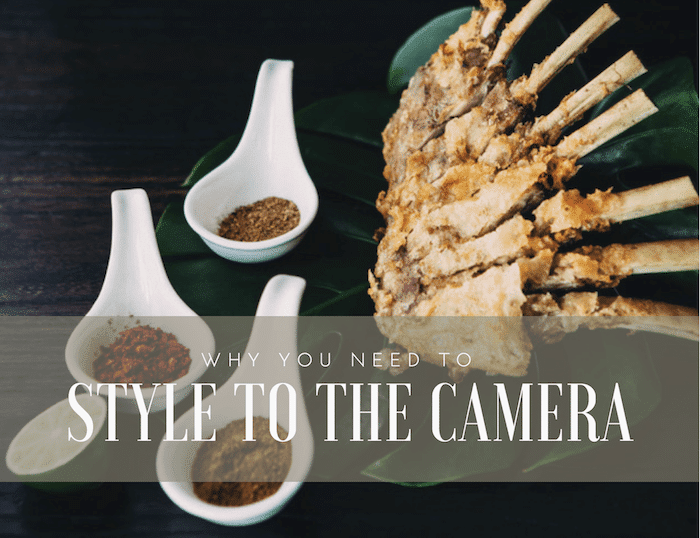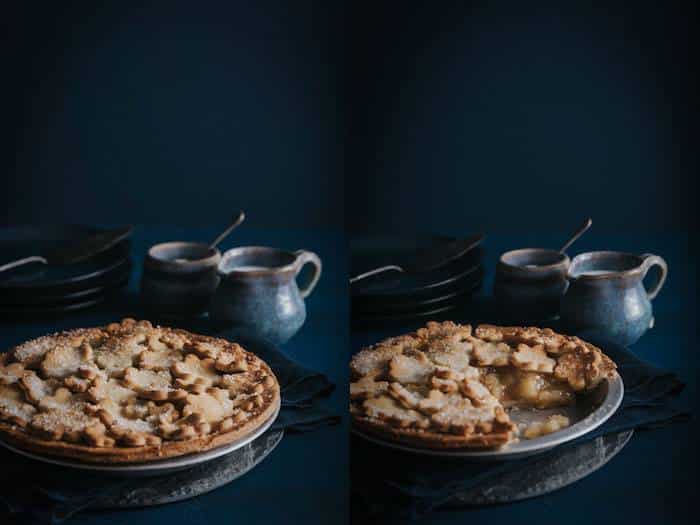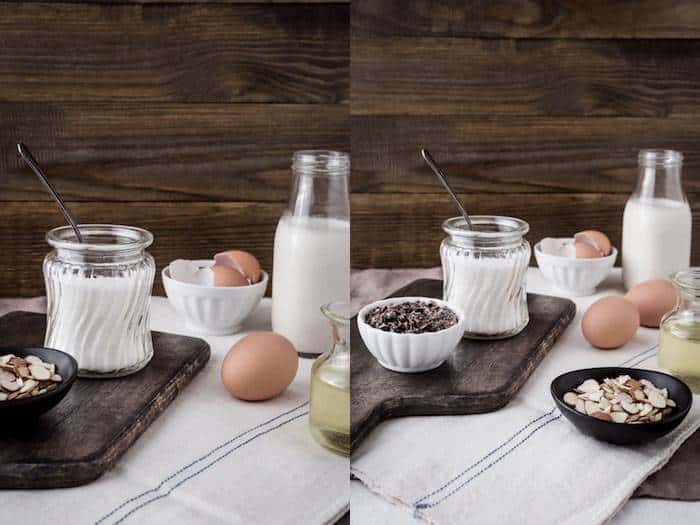
This is a common mistake I see bloggers and new photographers make: you compose the dish that you’re shooting, along with your props and the other elements that make up your scene. You then pick up a your camera and circle your set, like a hawk stalking its prey, looking through your lens and snap, snap, snap away until you have one hundred images that mostly look the same, and if you’re lucky, a gem or two.
In short—you don’t work with a tripod.
If you’re an aspiring professional food photographer, you need to break this habit right now. More often than not, when you’re working with clients on commercial gigs, you will need to keep your frame in the exact same place for consistency. This means not moving your camera, and even marking the legs of your tripod on the ground with a piece of electricians tape so you know exactly where they were in case your tripod gets bumped.
The beautiful thing about being a food blogger is that you can do whatever you want with your photography. If you want to do all close-ups or shoot each step of your recipe, you can do that. You can take twenty different images of your dish at different angles and post them all if you wish. No one gets to decide how you’re going to shoot. However, if you want to work professionally, you will have a less creative freedom, as you will be shooting according to a creative brief or other specifications laid out by the client or agency. This means shooting at a specific angle and creating consistent images with consistent light.
Great composition is key in great food photography. Creating a great composition means styling to the camera, not trying to find an angle where things looks best to the eye–a serendipitous moment for sure, but not to be counted upon. Styling for the camera means deciding where your main subject should fit within your frame, and adding or moving around the supporting elements such as props one by one, until you are satisfied with your overall composition. This is called building your set.
When you are adding elements to your set not only does it create consistency in your images, it is a lot easier to see which elements are not working or which ones need adjustment. Working without a tripod can feel very liberating but it’s not. Deliberately composing your set, thinking about what each elements adds to the overall impact of your composition and photo story, leads to better images overall. It frees up your hands and takes up less of your time, as you are not constantly picking up and putting down the camera, having to readjust your settings and recompose. This interrupts your flow, and can hamper your creativity.


Despite the fact that I work with a tripod ninety-nine percent of the time, there are times where I do take my camera off the tripod–usually at the end of my shoot–and see if I can find another cool angle with what I’ve got. Typically this would be on an editorial shoot, or when I’m working on my stock portfolio, or for a restaurant, not a packaging shoot where I have very specific parameters to work in. Basically, I do this when I’m sure that I already have my shot. I might end up with something beautiful out of sheer luck, but if I don’t, I know I already have what I need.
If shooting without a tripod is your default, set a challenge for yourself: the next time you shoot, lock your camera down on your tripod, find the best angle to shoot your food story, and build your set element by element, starting with your main subject. Take a shot each time you add something new and see how it works. Using a tripod consistently might take some getting used to, but the results will help improve your photograph game and just might surprise you.
1



